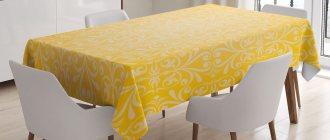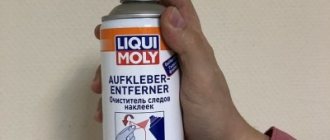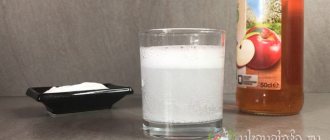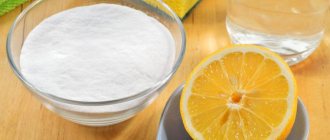Epoxy resin is very viscous, so air bubbles often form on its surface. In some cases, the problem occurs because the surface of the mold is poorly wetted. If you stir the water quickly, bubbles also form on the surface, but they quickly burst because the water is not so viscous.
When the composition sits for 5-10 minutes, even the smallest bubbles disappear completely. To create various products, mixtures with high viscosity are used. For this reason, bubbles form even after settling. Removing bubbles from epoxy resin is not an easy task, but it can be solved.
How to prevent
To prevent bubbles from forming, you need to mix the resin slowly. During the process, it is advisable not to make sudden, fast movements. To mix epoxy resin, it is better to use a thin cylindrical tube that tapers towards the bottom. If you use ordinary flat sticks and stir the resin not slowly, but quickly, a lot of bubbles will form on the surface, which will need to be gotten rid of.
You should stir the resin slowly and do not scratch the walls of the dish. This substance remains in a liquid state for up to 40 minutes, after which it hardens. In order for the resin to acquire the desired consistency and become more liquid, you need to add a little plasticizer DEG-1.
This product is often used to thin out resin. After its use, the substance becomes liquid like water, and accordingly loses its viscosity. This resin penetrates well into hard-to-reach places of complex shape. DEG-1 is easy to use and non-toxic if precautions are taken.
Compositions of this type are suitable for long-term storage, but, despite the advantages, they are expensive. DEG-1 helps get rid of bubbles in epoxy resin and prevent their occurrence. DBP is a more affordable chemical. It must also be used in accordance with the instructions. DBP reduces the viscosity level of the epoxy resin and, as a result, reduces the possibility of air bubbles.
Expert opinion
Oleg Vasiliev
Master of making furniture and interior items from epoxy resin. She creates unique items to order in her own production.
Ask a question to the master
We are talking about certain resins used in technical processes in production. Modern epoxy resins for pouring jewelry and table tops have excellent fluidity and a very long (up to several hours) life time. They do not require any additives. To prevent the appearance of bubbles, you should not just pour in an excessively large amount of the mixture at a time to avoid overheating and boiling.
To achieve maximum results from using the composition, you need to combine it with the resin and place it on low heat in a steam bath. Chemical reactions occur at temperatures up to 50°C degrees. To reduce the viscosity, you need to keep the resin in a steam bath for some time.
Good to know > Should I use epoxy resin or glue to join glass elements?
Required Security Measures
When working with epoxy resins, do not forget about safety measures. After all, this is only a ready-made, hardened epoxy mixture that is chemically neutral and does not pose any danger to human health. During the hardening process, the resin mass, especially in its “hot” version with TETA hardeners, releases a lot of toxic substances that are dangerous to humans, such as formaldehyde and phenol.
Therefore, it is necessary to protect yourself from harmful effects using disposable latex or even cotton gloves, a respirator, both at the stage of hardening of the resin with the release of aldehydes, and during the final finishing in the form of grinding and polishing with their inevitable formation of dust. The room where work with epoxy is carried out must be equipped with forced exhaust ventilation.
Heat
It is important to know how to pour epoxy resin correctly without bubbles. It is enough to place it in the oven, preheated to 50°C and leave for 7 minutes. During this time, the resin will melt and become less thick. Bubbles will appear on the surface, but after a while they will burst. Even if a problematic mixture is selected for work, after 10 minutes it will become usable. The smallest air bubbles will disappear.
Warming up in a conventional microwave oven has worked well. For a mixture volume of about 500-600 grams, 10-15 seconds of heating at low power is sufficient.
To expel bubbles from the working material, you can use a gas burner. It is highly recommended to use the compact model. The gas removes the smallest bubbles from the surface of the epoxy resin.
Alternatively, do not use a lighter as it may burn your fingers.
Freezing to Remove Epoxy
In the case of clothes or small items, you can use the freezer. After several hours in the cold, the hardened epoxy stain is easier to pick off with a sharp metal object or crack with a hammer. It is impossible to remove stains from furniture or other large objects, walls, floors, windows and many other surfaces for obvious reasons. In this case, a cold attack can be carried out using special means in aerosol cans
It is important to take precautions here:
- work only in full protective equipment, which includes gloves, goggles, a respirator or mask, and a hat;
- ensure good ventilation of the room in which the refrigerant is used: open windows or turn on forced ventilation;
- do not allow the presence of children, pets, or other persons without personal protective equipment in the premises;
- Do not turn the cylinder horizontally, at an angle or upside down.
The procedure for applying frost from a can is as follows:
We recommend:
How to remove paint from clothes at home
- Shake the bottle of refrigerant vigorously;
- spray the composition onto the hardened resin from a distance of 0.3 meters;
- quickly break or pick up the stain with a previously prepared tool.
Applying a vacuum, heating in the oven, filling with a syringe
Vacuum degassing is used on an industrial scale. The device for such manipulation is quite expensive, around fifteen thousand rubles. It is small but easy to use.
First, the glass is filled with resin and placed in this installation, after which it is turned on. After a couple of minutes, the gas leaves the space, and as a result of chemical reactions, the epoxy resin rises and increases in size several times. After the device is turned off, the bubbles completely disappear.
It is problematic to use such an installation at home; experimenting with a vacuum cleaner is not recommended. If you do not wet the mold intended for the product, the resin will not get into hard-to-reach places, this is due to its high viscosity. Air bubbles are more often observed in this type of filling.
There are cases when they are very large. To remove such formations, a plasticizer and other methods can be used. Thanks to the plasticizer, the mixture will become more liquid. After this, it is heated in the oven and becomes suitable for use.
Good to know > Which media separator should be used for epoxy resin
Be sure to wait until the resin penetrates into hard-to-reach places. To avoid air bubbles, it is necessary to pour the substance not along the edges, but from the end. If you ignore this rule, many bulges will appear, which will affect the quality of the product or decoration.
Ideally, the resin should be poured using a syringe. Thanks to this technique, you can accurately calculate the dosage. Many bubbles will not reach the working surface, but will remain in the syringe. To get rid of bulges that appear on viscous material, just use a toothpick. Just poke the bubbles with it before the epoxy hardens. To lubricate molds before pouring, it is better to use alcohol rather than water.
Expert opinion
Oleg Vasiliev
Master of making furniture and interior items from epoxy resin. She creates unique items to order in her own production.
Ask a question to the master
We are talking about silicone molds, which need to be wiped with alcohol to degrease the surface and remove future microscopic centers of bubble formation on the walls.
How epoxy resin works
The solution belongs to the two-component category, for the preparation of which two ingredients are used that are mixed together. We are talking about resin and hardener. Based on the chemical characteristics of the elements used, they both belong to polymers. Their molecular weight is small. The joining process involves a polymerization process. This means that small particles combine to form larger molecules.
The entire solution is subject to the process, so after hardening, the resin is a single element. Epoxy is a mass-forming element. The hardener is responsible for starting the polymerization process. Both elements should not be mixed with each other before preparing the solution. This process is irreversible. As the temperature increases, the process accelerates. Increasing the hardener in the solution will also give a similar result. To achieve the opposite effect, the temperature is lowered.
Precautions when working with resin
The chemical composition of epoxy resin is specific and implies the presence of toxins. However, the resin itself has amazing properties, since after hardening the product turns out to be absolutely harmless to others.
If the composition gets on the skin, it should be washed off with a soap solution and a sponge. You should use a respirator during the grinding process.
Removal from the body
Epoxy resin that has come into contact with the skin of your hands or another part of the body can be cleaned off with acetone, but only if you are not allergic to this solvent.
In other cases, you need to thoroughly wipe the resin before it thickens with a dry cloth, and then wash the area with soap. If an undetected drop of resin managed to harden on the skin, nothing fatal happened. The human epidermis is very elastic; after some time, under the influence of sweat, the microbonds between the epoxy polymer chains and the skin will weaken and the dirt will peel off. A possible chemical burn from the action of certain types of resins is treated with traditional anti-burn therapy while taking sedatives for allergies.
Useful to know > How long does epoxy resin take to dry, is it possible to speed up this process
Stain Cleaning Options
If there is a stain left from epoxy glue after use, you will have to use removal methods, because removing epoxy glue with a wet rag will not work. It is customary to distinguish between gentle and aggressive cleaning methods:
- heat;
- freezing;
- mechanical cleaning;
- use of chemical solvents.
When the base is heated
If epoxy glue was used at home and stains remain after working with it, you can try to remove them with a household hair dryer. It is permissible to remove the adhesive composition this way if the surface is heat-resistant and can withstand a hot air flow. Everything must be done in the following sequence:
- The temperature of the hair dryer is set to the maximum level.
- A hot air stream is directed onto the surface to be cleaned.
- The hairdryer should be moved in different directions to ensure maximum uniform heating.
- Gradually the glue will soften, so it is necessary to systematically remove the adhesive composition layer by layer using a spatula.
If you are cleaning a wooden surface, it is recommended to first moisten it with acetone to prevent cracking.
Method for freezing contamination
To use this method, you need to go to a hardware store and buy refrigerant in the form of an aerosol.
You also need to use personal protective equipment: goggles, respirator. Before use, you must read the instructions. Typically, freezing the surface to remove glue is done as follows:
- First you need to shake the aerosol can.
- Then you need to spray the refrigerant evenly onto the hardened adhesive composition.
- If the freezing is good, the epoxy glue will become brittle and cracks will appear on it.
- If this happens, the frozen composition just needs to be pryed off with a spatula and removed from the material.
The procedure can be repeated several times until all the frozen composition is removed. Due to freezing of the glue and when breaking the frozen composition, sharp fragments will form, so you need to be especially careful.
Mechanical cleaning
If a stain of epoxy glue has frozen on a metal or other surface that is resistant to mechanical stress, you can try to scrape off the resin with a sharp spatula or other suitable means. This is an aggressive cleaning method that will not work for most materials.
It should be used as a last resort when there is no time to heat the surface, freeze it or use solvents. Even durable metal surfaces can deteriorate over time due to strong mechanical stress, because... Corrosion processes will occur in places where scratches occur.
Using chemical solvents
An aggressive method, when used, there is a high probability of damage to the material and surface (especially if it is varnished or painted). Chemical solvents are suitable in cases where other methods have failed.
As a composition for cleaning the surface of epoxy glue, you can use:
- household nail polish remover;
- acetone;
- ethyl acetate;
- toluene;
- butyl acetate
You need to moisten the resin stain with the solvent as evenly as possible, then wait a little and try to remove the stain with a spatula. When using the method of dissolving the resin, it is possible to remove the epoxy almost always, because acetone and its analogues are capable of dissolving epoxy glue completely.
Use of fabric layers
To prevent bubbles from appearing on the surface of the epoxy, it is permissible to use a cloth before pouring the substance into the blanks. You need to take a soap solution and carefully apply it to the blank, and then to your hands. In a couple of minutes it will dry, you will need to cut the fiberglass into pieces, and dilute the resin with a special plasticizer.
After this, you will need to apply the resin to the blank using a quality brush. Do not apply this substance in a thick layer, otherwise a large number of bubbles will appear inside. You will need to lay a fabric layer on the oilcloth and carefully apply resin to it.
The fabric should absorb this substance evenly; it is not advisable for dry places to remain on it. Next, the fabric is applied to the blank with the side that is impregnated with epoxy resin. It is imperative to ensure that it does not wrinkle, but lies flat; it is recommended to carefully smooth it out. As a result, the fabric should completely cover the blank.
It is important to ensure that there are no air bubbles under the material; if necessary, you can use a spatula to squeeze them out. In some cases, it is not possible to remove bubbles from under the fabric. Then you should make one small puncture and gently press on the material so that the air comes out. There should be no folds in the material, so you need to straighten everything out again.
Another layer must be applied to the fabric impregnated with epoxy resin. You should repeat the procedure, but make sure that the first layer lies in its place and does not move. Three more layers are laid in a similar manner to consolidate the result.
After the work, the resin can be easily washed off your hands, since before starting they were treated with a soap solution.
Source
What if…
Sometimes, no matter how hard you fight, bubbles still remain - for example, if you pour some complex investments with a lot of fluff, for example, moss or insects. In such cases, you shouldn’t be upset, but try to accept what happened - it’s beautiful!
Dear author of the photo! If you believe that copyright has been violated, please write to us at , and we will take the necessary measures.
Proper preparation
You need to start getting rid of bubbles at the pouring stage. To do this, you need to properly treat the surface of the material if it will be filled with resin, such as a piece of wood. If the pouring is done in a silicone mold, no additional measures are required to prepare it. It is enough to check that it is in good condition without cuts or tears.
Next, the epoxy resin and hardener are mixed. These components must be mixed together for a long time and thoroughly. At the same time, you should not make sudden actions or quick movements, this will only provoke increased formation of air bubbles. There is also no need to rush in this matter. The hardening time of epoxy resin is long, so there is no need to rush. During mixing, it is better to avoid removing residual resin from the edges of the container. Moreover, the volume of kneaded material is taken with a reserve. To achieve the best pouring result, do not use artificial thickeners. Let the resin remain the same liquid consistency as usual. When pouring the prepared epoxy, you should also maintain a slow pace of work. It is poured into the container around the perimeter so that it smoothly and fully spreads throughout the entire form, filling all the containers, cavities and bends that exist. When pouring some material (again, let’s take wood as an example) inside the product, you need to make sure that the resin spreads over it also slowly. This will allow you to qualitatively fill all the pores on the surface of the material and reduce the percentage of bubble formation.
If you want to achieve an ideal result, then you should adhere to the following advice:
- after the resin is thoroughly mixed with the hardener, it can be additionally placed in a warm room or cavity; — the residence time of the resin there is no more than 15 minutes; — the temperature should not exceed 55 degrees. In domestic conditions, this could be an oven or the surface of a working battery.
When heated to the specified temperature, the consistency of the resin greatly liquefies. In this case, air bubbles rise faster to the surface of the material and burst. It is important to follow time and temperature guidelines here so as not to overdo it and overheat the epoxy material.
These simple recommendations will help both beginners and those who love working with epoxy resin to avoid simple mistakes and improve the quality of manufactured products.
Working with epoxy resin has its own peculiarities, and one of them, about which questions often arise, is the formation of bubbles. Let's look at this topic in more detail.
When you have already started working with resin and have a plan for the finished decoration in your head, then most often you want the result to be smooth, transparent and without foreign inclusions. But if such inclusions as, for example, sand and dust can be easily avoided, then with the air bubbles that we will talk about, everything is a little more complicated, because the laws of chemistry and physics and the air around us cannot be canceled. But - in our work we can reduce bubbles to a minimum, and from a minimum to zero.
The thinner the resin, the faster the bubbles that form will come out of it before it completely hardens. On our website you can buy epoxy resin Crystal 6
, which is the thinnest of our resins and is designed specifically for pouring into molds.











